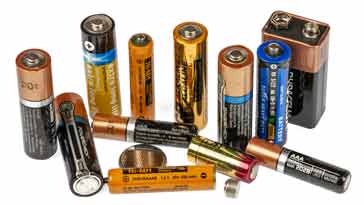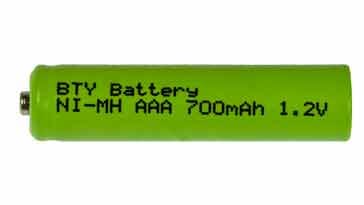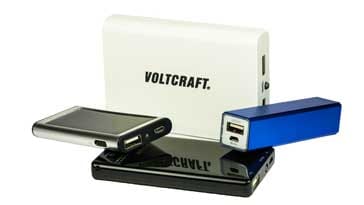Battery Capacity & Lifetime
Understanding battery capacity and life or lifetime is important these days because it is important to know how long it will run before the battery is exhausted.
Home » Electronic components » this page
Battery Technology Includes:
Battery technology overview
Battery definitions & terms
Battery capacity & life
Batteries / cells in series & parallel
Zinc carbon
Alkaline cells
Zinc air cells
Lithium primary battery
NiCad
NiMH
Li-ion
Lead acid
Battery leakage cleaning, cures
Knowing how to estimate the lifetime of a battery before it becomes exhausted and needs replacing or recharging is very important in these days when so many electronic and electrical items are battery powered.
Knowing soemthing about battery capacity and the life expected between charges for rechargeable batteries or when to replace non-rechargeables can be very useful.

Accordingly the concept of battery life and battery capacity are very important not only for electronic circuit designs and the designers, but also for anyone who uses batteries.
Video: Battery charge and charge lifetime
Battery capacity basics
Most frequently the capacity of a battery is measured in terms of the actual charge that it stores. It relates to the current that it can supply and for how long.
As we all know, batteries only last for a certain time, and it often seems that they run out of charge at the most inconvenient moment, however by understanding a little more about battery capacity and battery life it can be possible to plan their usage a little better.
The capacity of a battery, whether rechargeable or non-rechargeable is most commonly measured in amp hours or milliamp hours.
Typically amp hours are used for much larger items such as car batteries or many other electrical items where the current is measured in amps, the units will be amp-hours.
For smaller items like batteries used for powering electronic equipment, the capacity is typically measured in milliamp-hours - although sometimes these figures may exceed 1000 milliamp hours, but it is less confusing to do that than have some batteries of a certain type measured in milliamp hours and others in amp hours.
Typically batteries used for consumer electronics will be measured in milliamp hours, whereas those for heavier electrical systems tend to be measured in amp hours.
For some batteries, the capacity will be printed on the outside of the battery, whereas for others it will be necessary to look at the data-sheet.
As an example a typical alkaline AA cell may have a capacity of 2500 mAh, or milliamp hours. This means that it could supply 2500 mA or 2.5 amps for an hour, or 1.250 amps for two hours and so forth.
This means that it is very easy to work out how long a battery can supply a steady current.
In milliamp hours:
Or in amp hours:
Using these equations it is easy to calculate that a battery with a 700 mAh will be able to provide a current of 20 mA for 700 / 20 = 35 hours.

The reality of battery charge
Although the theory for the battery charge and lifetime sounds good, it is it always as easy as that.
Although the maximum charge held by the battery may appear to give a long lifetime under the anticipated current levels, the ideal performance is not likely to be matched by reality. There are several reasons for this.
Internal resistance: ALl batteries have a degree of internal resistance and as the cell or cells become exhausted, the resistance increases. It is likely that the resistance will rise to such an extent that the external voltage will fall to a value where it cannot be used properly before all the charge has been depleted.
Self discharge: One common issue that affects rechargeable batteries, although primary cells and batteries are also affected is self discharge where the cells lose their charge over a period of time.
Some technologies are better than others, but it can mean that if the cell or battery has been left for a time, then it will not have nearly as much charge as expected.
Temperature: The temperature will have an effect on the amount of charge that can be delivered by a battery. Rechargeable batteries are quite sensitive to temperature and should always be run around room temperature. If they are used in the cold, then their efficiency will fall and so too will the amount of charge that can be delivered.
For primary batteries, and cells, and old trick to get the last bit of charge out of them (they always fail when a replacement is not available), was to warm them up - don't heat them, but warm them so that the chemical activity inside the battery or cell increases. This can give them a short extra lease of life before a replacement is found. Never heat them in an oven, etc as this could cause them to explode , leak, etc.
Powerbank capacity for recharging
The capacity of a power bank is important when considering re-charging items like a mobile phone.
In order to fully re-charge a phone or other electronic item, the powerbank must have a greater capacity than that of the item being recharged.
It stands to reason that the powerbank can only transfer the charge it holds. As a result it must contain more charge than to needs to transfer.
It is a fact that the charging process is never 100% efficient. As a result it takes more charge from the power bank to fully charge the electronic item battery.

For example an iPhone X has a battery capacity of 2716 mAh according to its specification. With a large powerbank having a capacity of 25000 mAh, it should be possible to provide just over 9 complete charges, but because of the charging efficiency and other losses this figure will not be met.
As a result it is necessary for the for any power bank to have more than the capacity of the phone battery if it is to provide a complete charge.
Battery capacity in terms of Wh
Another way of looking at the capacity of a battery is to look at the power it can provide. In other words it looks at the voltage as well as the current it can provide.
Essentially using watt hours provides the power capacity for the battery. The power capacity defines how much energy is stored in the battery.
In terms of a definition, a Watt hour can be determined by multiplying battery voltage by the amount of current the battery delivers over the time before it becomes discharged.
Where:
V = voltage in volts
I = current in amps
T = time for which current flows before battery is exhausted.
It is worth noting that the battery voltage will fall as the battery nears end of its charge, so normally the operating voltage is used and the end of charge is taken to be the point where the battery voltage falls below an acceptable value.
To convert amp hours to Watt hours, it is simply necessary to multiply the Amp house by the voltage.
Normally batteries measured in terms of their power capacity tend to be measured in Watt hours unless their capacity is very small. Take for example a typical AA alkaline cell. This might typically have a capacity measured in mAh of 2500. If it has a voltage of 1.5 volts, then the power capacity will be 2500 x 1.5 = 3750milliwatt hours and divided by 1000 to convert to watt hours, this becomes 3.75 Wh.
The capacity of a battery, whether it is a primary battery of cell that only has a single use, or a rechargeable one, its capacity is one of the prime considerations. The amount of charge it can hold will determine the battery lifetime for any situation or use. As the battery or cell is there to provide charge, the amount of charge it can hold and then provide is one of itse key performance parameters.
 Written by Ian Poole .
Written by Ian Poole .
Experienced electronics engineer and author.
More Electronic Components:
Batteries
Capacitors
Connectors
ADC
DAC
Diodes
FET
Inductors
Memory types
Phototransistor
Quartz crystals
Relays
Resistors
RF connectors
Switches
Surface mount technology
Thyristor
Transformers
Transistor
Unijunction
Valves / Tubes
Return to Components menu . . .



